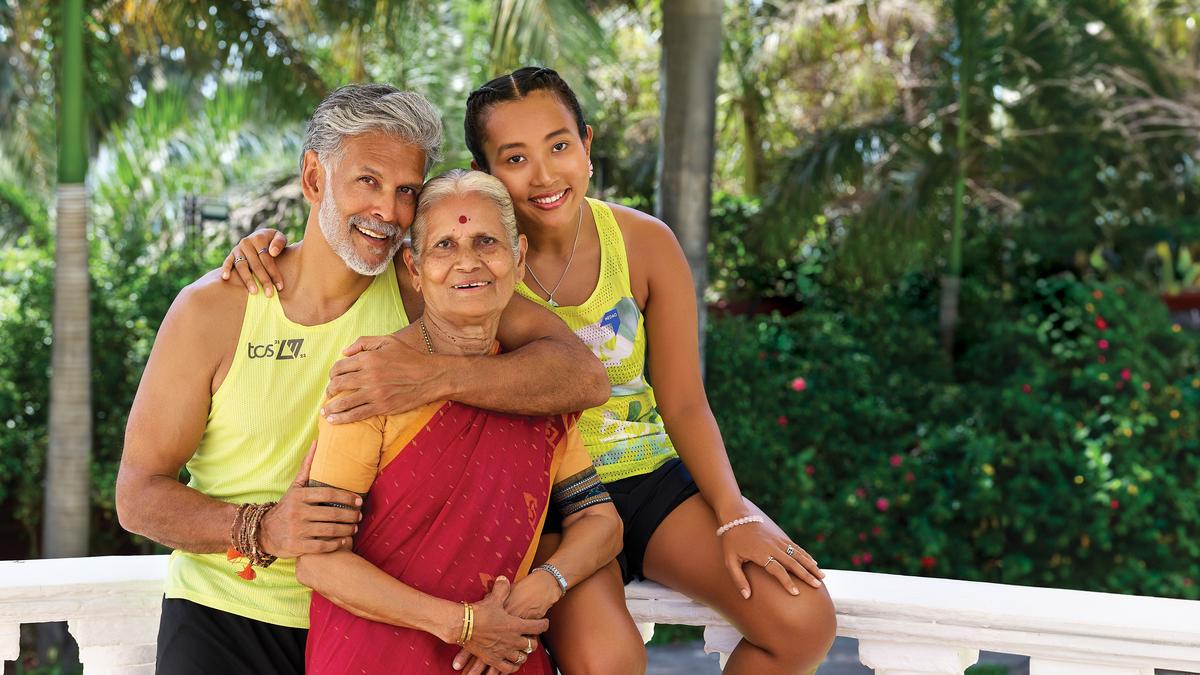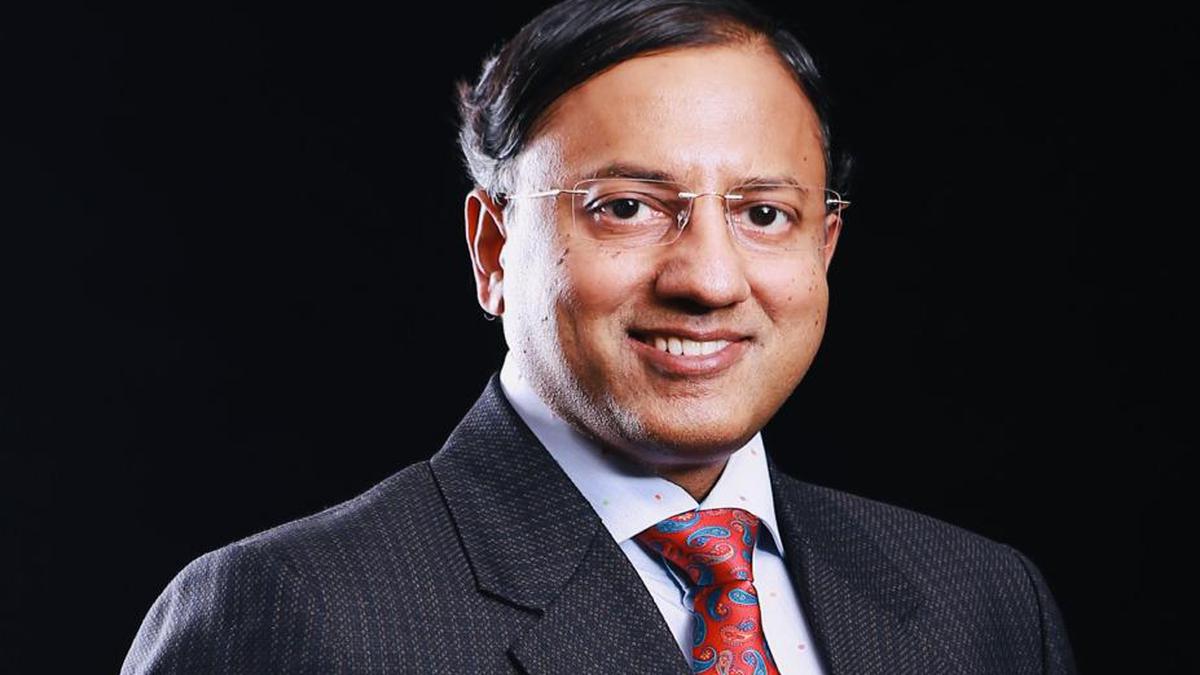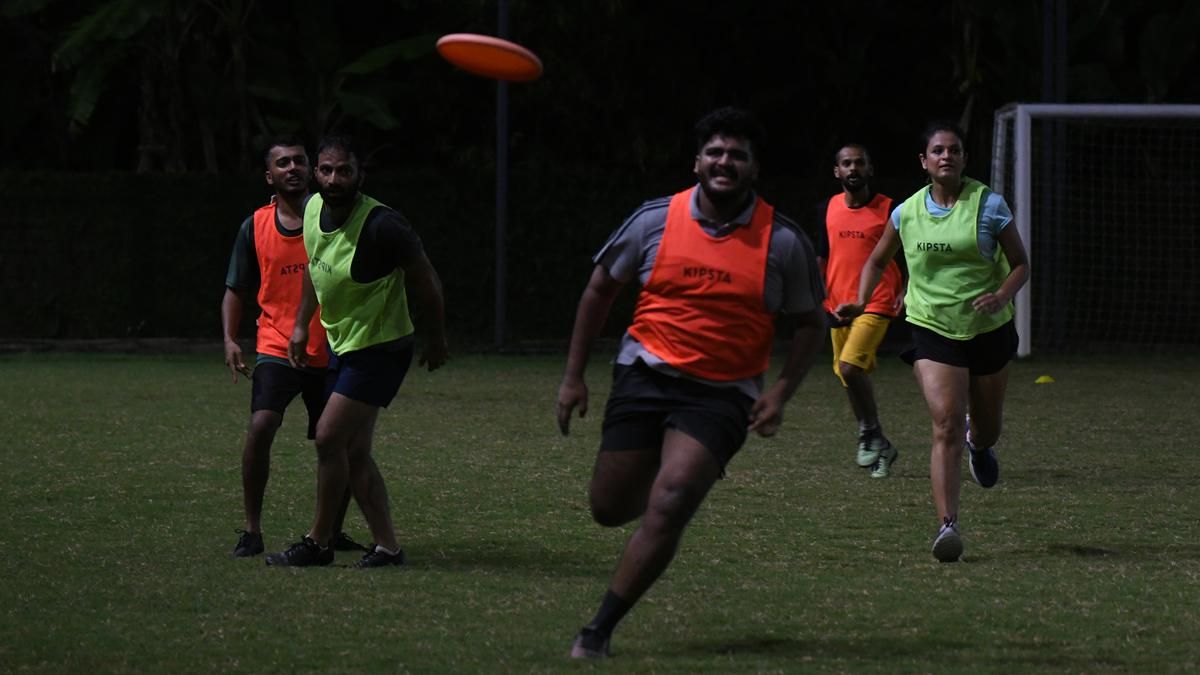Milind Soman with mother Usha and wife Ankita Konwar
| Photo Credit: Special arrangement
This past spring, Milind Soman and wife Ankita Konwar matched step-for-step running the breadth of Europe. They are back now in Lower Parel, Mumbai, dialling in for a video call along with Usha Soman, Milind’s 84-year-old mother, a retired Biochemistry lecturer, to discuss Keep Moving (published by Juggernaut). The book written with well-known author Roopa Pai (The Gita for Children and Milind Soman’s memoir Made in India are by her) is a part-biography, part-fitness journey of the trio that arguably makes up India’s first family of fitness.
“The book explores three different perspectives on how to be holistically healthy through people in three different age groups,” says Milind, 58, who has stayed in the spotlight for decades, finding fame as a supermodel, actor, TV presenter and fitness evangelist. Ankita, a 32-year-old yoga practitioner, introduces readers to her idea of fitness garnered from a childhood spent in the great, wide spaces of North-East India, while Usha, grew up at a time when exercise was not a concept and found fitness only post-retirement. “In my case it was the pursuit of sport from a young age,” says Milind. “We have arrived at our own idea of fitness at a time when it is easier to build it with the help of trainers and coaches.”
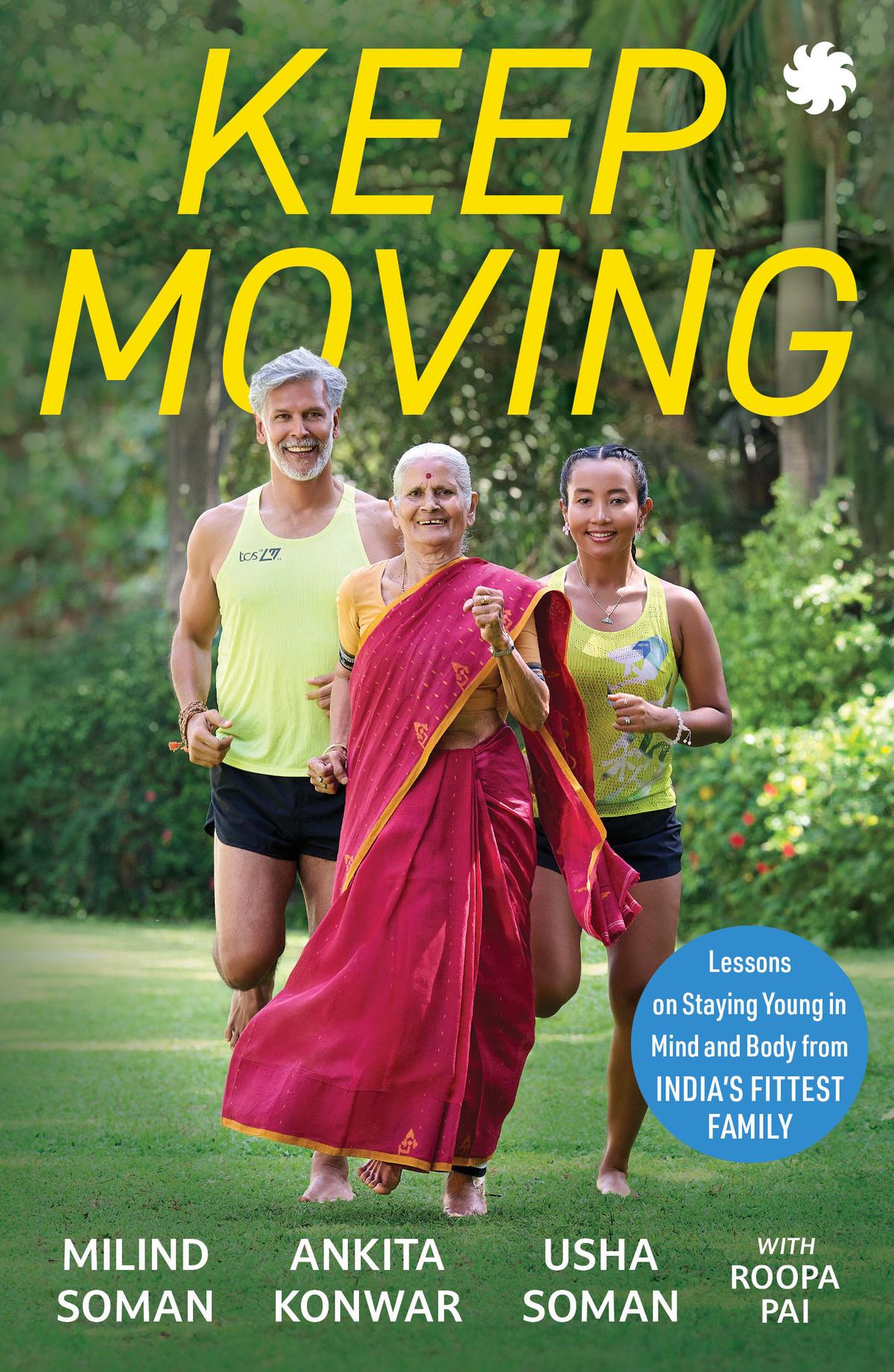
The book Keep Moving has been published by Juggernaut
| Photo Credit:
Special arrangement
The book begins with the existential questions ‘How do you count your age? What is good health anyway? What does fitness look like from the perches of 84, 58 and 32?’ And in exploring the lives of the Somans it is as much a memoir as it is a self-help book on the nature of fitness and health.
Usha’s story leads the book, discussing how metabolism and balance wind down with advancing age and harks back to a halcyon childhood in the early years of India’s independence. The child of a well-to-do doctor in Bombay, Usha grew up with five siblings, with education and household chores at the core of their existence. “Eating fresh and local were part of our lives even then,” says Usha, adding that parents and children had far more time to bond over chores that kept them fit. “Post-retirement, walking and trekking turned on the fitness switch for me,” says Usha, who can do push-ups and skip rope.
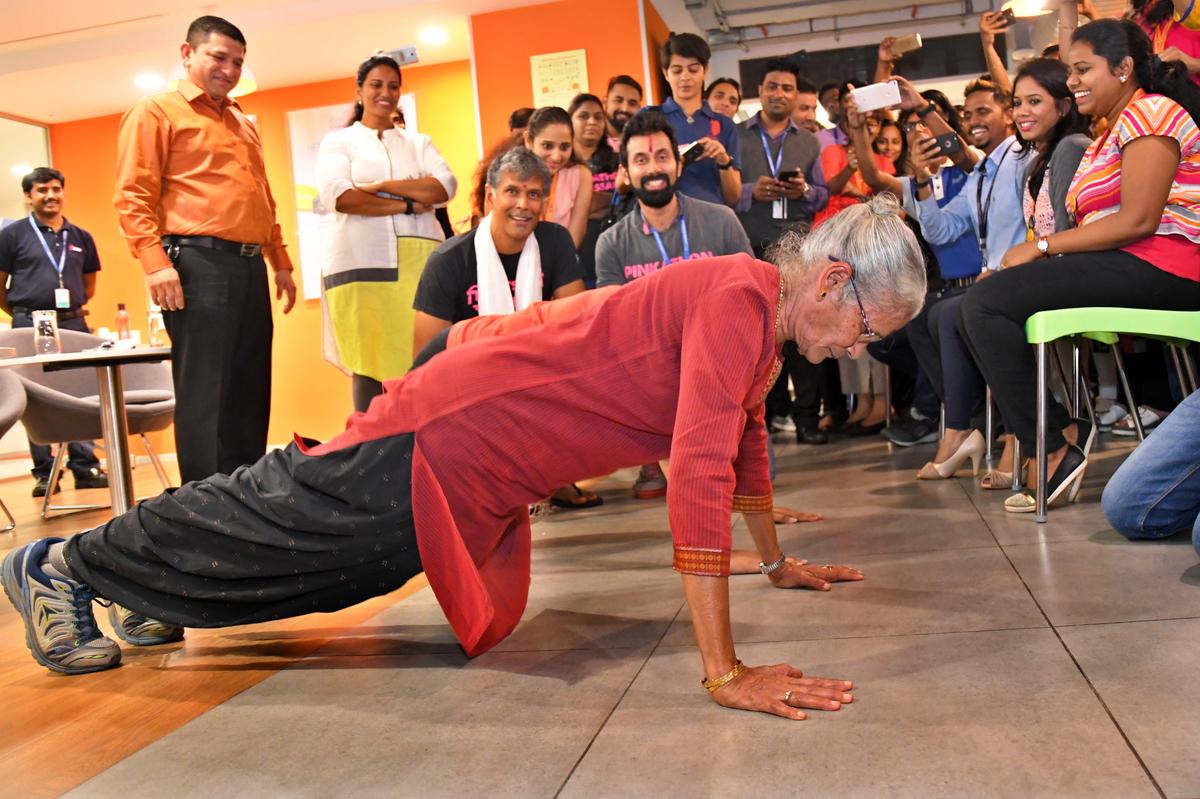
Usha Soman doing push ups in Visakhapatnam in 2018. She was 78 then.
| Photo Credit:
KR Deepak
Milind, who has been on the nation’s mind since his lithe frame stepped out of a box in Alisha Chinai’s music video ‘Made in India’, was born in Glasgow and moved to Bombay to find fame as a national-level swimmer. In the book, he says he loved swimming so much that he spent an inordinate number of hours in the pool. “I’ve been the same weight since I was 19, 80-81 kilograms. That’s 40 years. I follow no diet; most people eat way too much. What helped was being active,” says Milind. Even in the years that he gave up swimming to take up modelling and a lifestyle that involved hard drinking, smoking and the occasional drugs, Milind managed to keep his body as strong as a steel wire. It was in 2004, when Milind heard of a marathon in Mumbai that his sportsman heart began to beat again. “At 37, I decided to kick out what was holding me back and run. At 50, I did my first Ironman Triathlon,” he says.
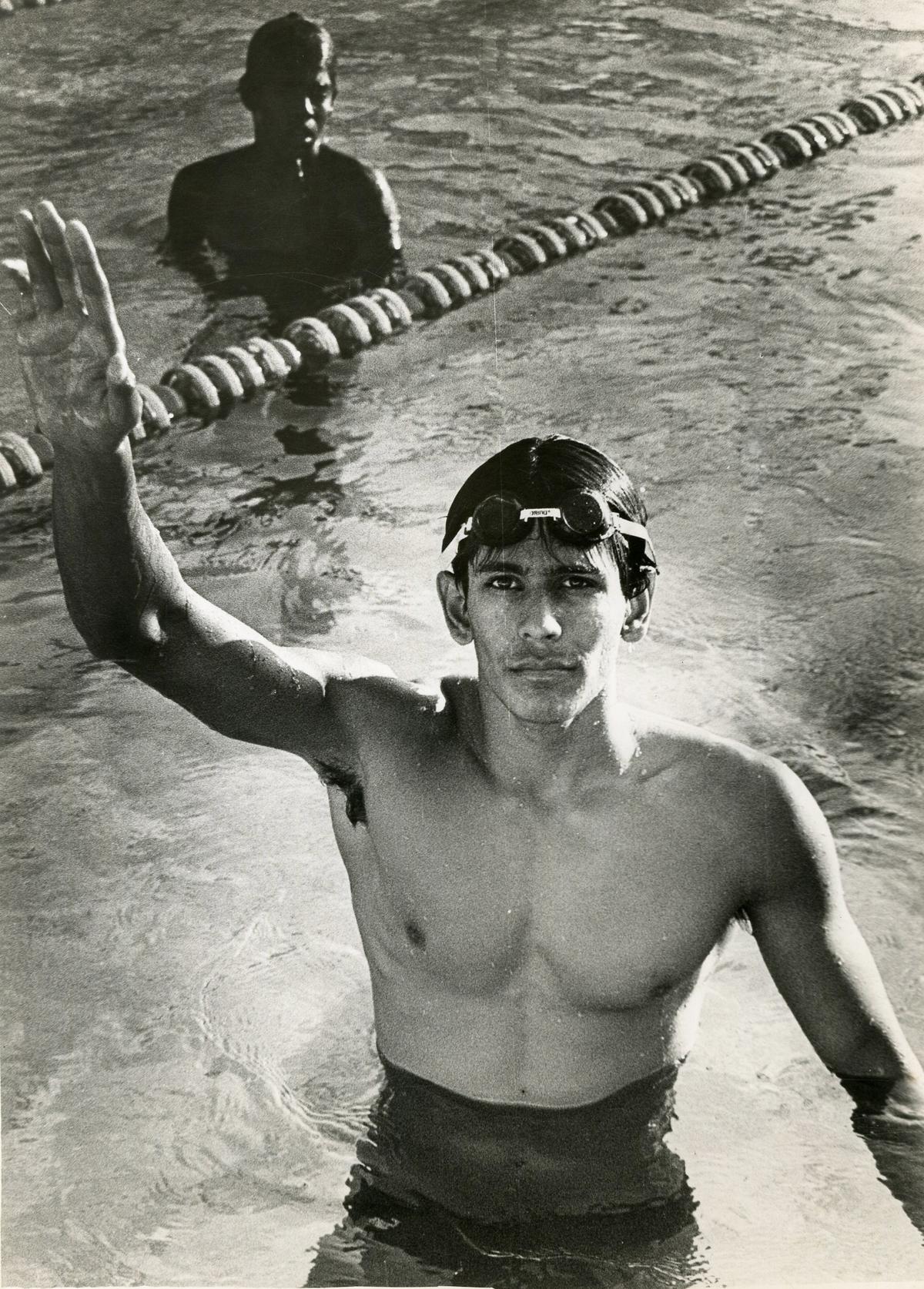
Milind Soman of Maharashtra raises his arm after winning the men’s 200m breaststroke in the 41st National Aquatic championship in Bombay on December 30, 1984.
| Photo Credit:
Thomas Rocha / The Hindu Archives
Ankita cycled miles from her boarding school to the banks of the Subansiri in Assam in an attempt to get over a childhood trauma. Later, when life served her another blow, it was exercise that saved her. “Exercise, especially if you need to address your mental health,” says Ankita. “You need to prioritise what is important to you, even with the full-time job, children and chores.”
Milind concurs. “You need to find it in your head,” he says, when asked how he runs mid-day in a city as humid as Mumbai. “The reason you want it should resonate emotionally with you. If you find it, you will continue. I start exercising while still in bed; it helps me wake up energetic.” Milind also launched Pinkathon to promote women’s fitness and breast cancer awareness. “India has the fastest-growing running population in the world and they are mostly in Mumbai,” says Milind, known for running barefoot often. “I don’t run barefoot in the dark or when it is wet, and prefer to choose my road when running so. Roads are generally clean; it’s the footpaths that are dirty,” he adds.

The book also closes each chapter with thoughts from the three on how they perceive each other’s fitness goals. Milind believes that hip mobility is what we should address as we age, while for Ankita it is about moving your body when your mind is noisy. Usha believes that finding your balance is also important. But it is Milind who has the last word. “Exercise is a very intimidating term. If you want to be healthy, you need to be active. I recommend running a marathon at least once in your life. Endurance sport is a life-changing experience emotionally and spiritually.”
The book is available both online and in stores.

